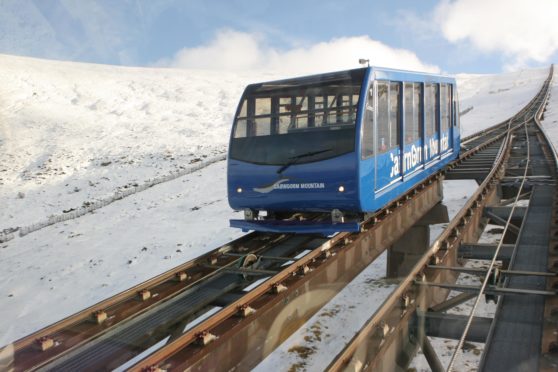Demolition of the troubled Cairngorm funicular railway would cost £13.3million, it has emerged.
The future of the beleaguered Cairngorm funicular railway, closed over safety fears last year, was plunged into doubt after the country’s spending watchdog last month warned “tough decisions” on repairs were needed soon.
Now Highlands and Islands Enterprise, the publicly-owned body operating the resort, has told the Scottish Government that it has made a high level estimate of the potential cost of physically dismantling the funicular railway and reinstating the hillside, instead of repairing it.
However, a final decision cannot be taken until a detailed business case is approved by the Scottish Government, which will also consider the option of removing the funicular and taking account of the impact of climate change where there will be less snow on the mountains in the future.
HIE has stated it “is working to a high level indicative cost for repair works, estimated at £10m”.
It was stressed, however, that the actual cost of repair will only become known following detailed design and the procurement of a contractor.
It added: “HIE’s current, high level estimate of the potential cost of physically dismantling the funicular railway and reinstating the hillside is up to £13.3m.
“Regarding repair, it was possible that costs could be phased over several years. There was potential for HIE to use income from the sale of a significant property asset (Centre for Health Science, Inverness).”
Mark Tate, chief executive of Cairngorms Business Partnership, said: “Whilst it is a very important piece of infrastructure on Cairngorm (in winter and summer) the investment in snow making last year has gone some way to mitigate the snowsports challenges caused by its failure.
“Whether it is taken away and replaced or repaired, the price tag looks to be very significant. The most important thing is that the decisions that are to be made are made with the benefit of very broad consultation, are made to secure a future for the mountain for the next 20 years at least and are made as quickly as possible.”
